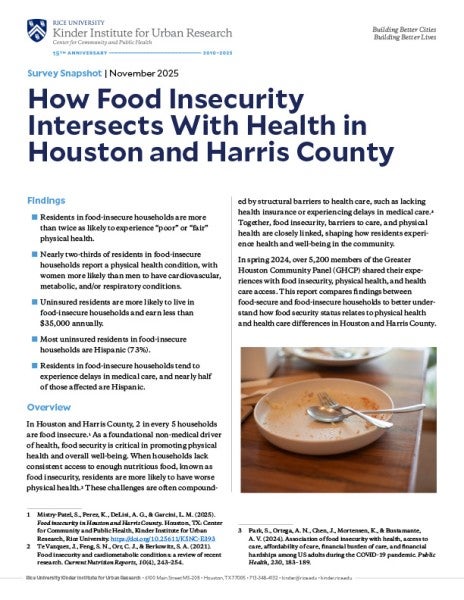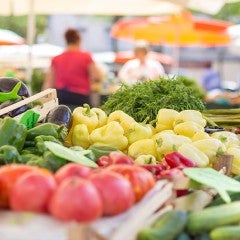In Houston and Harris County, 2 in every 5 households are food-insecure, struggling to consistently access nutritious food. Food insecurity is linked to poorer physical health and is often made worse by barriers to health care, such as lack of insurance or delayed medical care. This snapshot compares food-secure and food-insecure households to show how differences in food access relate to health outcomes and health care. Data comes from a survey of more than 5,200 residents in spring 2024.
Key findings
- Twenty-nine percent of residents in food-insecure households rate their physical health as “poor” or “fair.” This is more than double the rate of residents in food-secure households (12%).
- Nearly two-thirds (64%) of residents of food-insecure households report having a physical health condition, with women more likely than men to have cardiovascular, metabolic and/or respiratory conditions.
- Uninsured residents are more likely to live in food-insecure households and earn less than $35,000 annually.
- Most uninsured residents of food-insecure households are Hispanic (73%).
- Residents in food-insecure households tend to experience delays in medical care, and nearly half of those affected are Hispanic.
Suggested citation: Mistry-Patel, S., Ballard, H. K., Martinez, A., Gonzalez, K., Perez, K., & Garcini, L. M. (2025). How food insecurity intersects with health in Houston and Harris County. Houston, TX: Center for Community and Public Health, Kinder Institute for Urban Research, Rice University. DOI: https://doi.org/10.25611/53FE-J865



